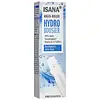What's inside
What's inside
 Key Ingredients
Key Ingredients

 Benefits
Benefits

 Concerns
Concerns

 Ingredients Side-by-side
Ingredients Side-by-side

Water
Skin ConditioningCaffeine
Skin ConditioningGlycerin
HumectantPanthenol
Skin ConditioningSodium Hyaluronate
HumectantAcetyl Tetrapeptide-5
HumectantPalmitoyl Pentapeptide-4
Skin ConditioningAcetyl Hexapeptide-8
HumectantAllantoin
Skin ConditioningGlycine
BufferingAlanine
MaskingSerine
MaskingValine
MaskingIsoleucine
Skin ConditioningProline
Skin ConditioningThreonine
Histidine
HumectantPhenylalanine
MaskingArginine
MaskingAspartic Acid
MaskingHydrolyzed Glycosaminoglycans
HumectantHydrolyzed Hyaluronic Acid
HumectantHyaluronic Acid
HumectantSodium Hyaluronate Crosspolymer
HumectantSodium Lactate
BufferingSodium Benzoate
MaskingPotassium Sorbate
PreservativeSodium PCA
HumectantPropanediol
SolventPCA
HumectantHydroxyethylcellulose
Emulsion StabilisingLactic Acid
BufferingTetrasodium EDTA
Water, Caffeine, Glycerin, Panthenol, Sodium Hyaluronate, Acetyl Tetrapeptide-5, Palmitoyl Pentapeptide-4, Acetyl Hexapeptide-8, Allantoin, Glycine, Alanine, Serine, Valine, Isoleucine, Proline, Threonine, Histidine, Phenylalanine, Arginine, Aspartic Acid, Hydrolyzed Glycosaminoglycans, Hydrolyzed Hyaluronic Acid, Hyaluronic Acid, Sodium Hyaluronate Crosspolymer, Sodium Lactate, Sodium Benzoate, Potassium Sorbate, Sodium PCA, Propanediol, PCA, Hydroxyethylcellulose, Lactic Acid, Tetrasodium EDTA
Water
Skin ConditioningButylene Glycol
HumectantSorbitol
HumectantBetaine
HumectantPanthenol
Skin ConditioningGlycerin
HumectantUrea
BufferingCaffeine
Skin ConditioningEscin
TonicSerine
MaskingSodium Hyaluronate
HumectantRuscus Aculeatus Root Extract
AstringentBiosaccharide Gum-1
HumectantCentella Asiatica Leaf Extract
Skin ConditioningAlgin
MaskingPullulan
Calendula Officinalis Flower Extract
MaskingPhenoxyethanol
PreservativeGlyceryl Polyacrylate
Trehalose
HumectantCarbomer
Emulsion StabilisingEthylhexylglycerin
Skin ConditioningPentylene Glycol
Skin ConditioningAmmonium Glycyrrhizate
MaskingSodium Hydroxide
BufferingCaprylyl Glycol
EmollientDisodium Phosphate
BufferingHydrolyzed Yeast Protein
Skin ConditioningSodium Citrate
BufferingPantolactone
HumectantPotassium Phosphate
BufferingCitric Acid
BufferingWater, Butylene Glycol, Sorbitol, Betaine, Panthenol, Glycerin, Urea, Caffeine, Escin, Serine, Sodium Hyaluronate, Ruscus Aculeatus Root Extract, Biosaccharide Gum-1, Centella Asiatica Leaf Extract, Algin, Pullulan, Calendula Officinalis Flower Extract, Phenoxyethanol, Glyceryl Polyacrylate, Trehalose, Carbomer, Ethylhexylglycerin, Pentylene Glycol, Ammonium Glycyrrhizate, Sodium Hydroxide, Caprylyl Glycol, Disodium Phosphate, Hydrolyzed Yeast Protein, Sodium Citrate, Pantolactone, Potassium Phosphate, Citric Acid
 Reviews
Reviews

Ingredients Explained
These ingredients are found in both products.
Ingredients higher up in an ingredient list are typically present in a larger amount.
Caffeine is most associated with coffee, tea, and cacao. In skincare, it helps with calming inflammation and is rich in antioxidants.
While caffeine is used to treat cellulite and and dark circles, further studies are needed to prove this. It has been believed to help with these skin conditions due to its ability to dilate blood vessels and increase blood flow.
Some studies are looking into caffeine's ability to protect against UV rays.
Learn more about CaffeineGlycerin is already naturally found in your skin. It helps moisturize and protect your skin.
A study from 2016 found glycerin to be more effective as a humectant than AHAs and hyaluronic acid.
As a humectant, it helps the skin stay hydrated by pulling moisture to your skin. The low molecular weight of glycerin allows it to pull moisture into the deeper layers of your skin.
Hydrated skin improves your skin barrier; Your skin barrier helps protect against irritants and bacteria.
Glycerin has also been found to have antimicrobial and antiviral properties. Due to these properties, glycerin is often used in wound and burn treatments.
In cosmetics, glycerin is usually derived from plants such as soybean or palm. However, it can also be sourced from animals, such as tallow or animal fat.
This ingredient is organic, colorless, odorless, and non-toxic.
Glycerin is the name for this ingredient in American English. British English uses Glycerol/Glycerine.
Learn more about GlycerinPanthenol is a common ingredient that helps hydrate and soothe the skin. It is found naturally in our skin and hair.
There are two forms of panthenol: D and L.
D-panthenol is also known as dexpanthenol. Most cosmetics use dexpanthenol or a mixture of D and L-panthenol.
Panthenol is famous due to its ability to go deeper into the skin's layers. Using this ingredient has numerous pros (and no cons):
Like hyaluronic acid, panthenol is a humectant. Humectants are able to bind and hold large amounts of water to keep skin hydrated.
This ingredient works well for wound healing. It works by increasing tissue in the wound and helps close open wounds.
Once oxidized, panthenol converts to pantothenic acid. Panthothenic acid is found in all living cells.
This ingredient is also referred to as pro-vitamin B5.
Learn more about PanthenolSerine is an amino acid naturally found in our body. Our bodies use amino acids to create protein.
Amino-acids help give keep our skin hydrated. They play an important role in the skin barrier, which keeps the skin plump and firm.
Serine is a non-essential amino acid, meaning we don't need to obtain it from eating foods.
Learn more about SerineSodium Hyaluronate is hyaluronic acid's salt form. It is commonly derived from the sodium salt of hyaluronic acid.
Like hyaluronic acid, it is great at holding water and acts as a humectant. This makes it a great skin hydrating ingredient.
Sodium Hyaluronate is naturally occurring in our bodies and is mostly found in eye fluid and joints.
These are some other common types of Hyaluronic Acid:
Learn more about Sodium HyaluronateWater. It's the most common cosmetic ingredient of all. You'll usually see it at the top of ingredient lists, meaning that it makes up the largest part of the product.
So why is it so popular? Water most often acts as a solvent - this means that it helps dissolve other ingredients into the formulation.
You'll also recognize water as that liquid we all need to stay alive. If you see this, drink a glass of water. Stay hydrated!
Learn more about Water